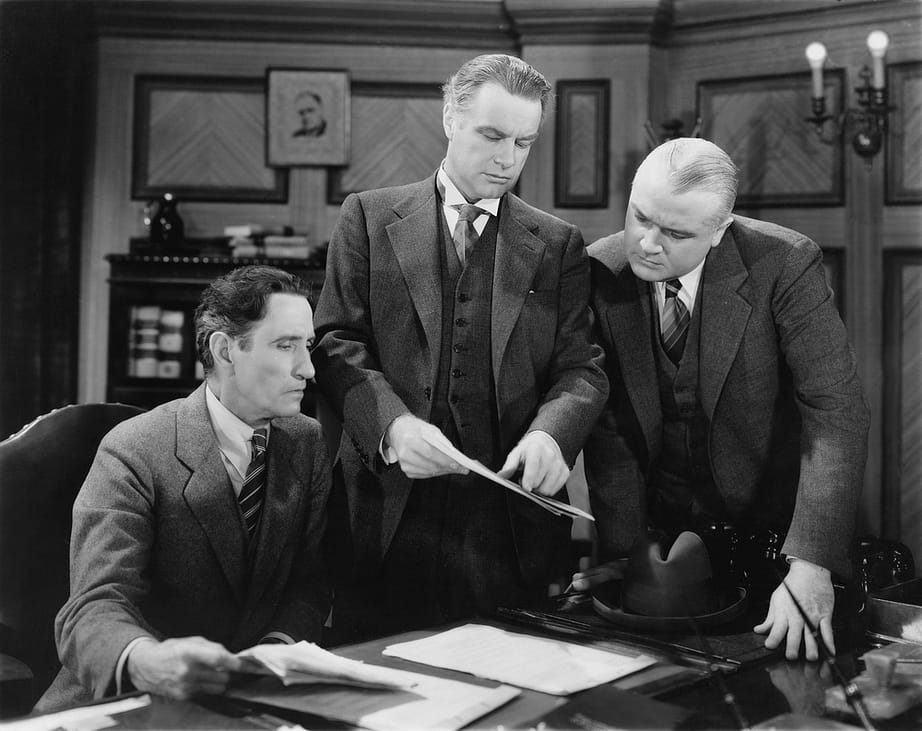The ripple effect of a single hire
CEO’s, as every hire is a strategy, whether onboarding a junior analyst or a COO, the impact of a new team member extends far beyond their job description. Culture, communication, and collective performance all recalibrate the moment someone new enters the equation.
For CEOs and Boards navigating succession or growth phases, overlooking the broader team impact of a new hire can be a critical misstep. Productivity gains—or losses—don’t stem from individual capability alone. They emerge from how that capability interacts with, strengthens, or destabilizes existing dynamics.
Today’s business environment is marked by complexity, pace, and pressure. Leadership teams can no longer afford to view hiring as a tactical necessity. It’s a strategic lever—especially at the executive level. That’s why organizations increasingly turn to retained executive search partners, not merely to fill seats but to assess team synergy and long-term cultural fit. There is only so much an internal TA team can do.
Team Chemistry: Why Cultural Alignment Is Non-Negotiable?
High-performing teams thrive on cohesion, shared purpose, and aligned values. These elements, while intangible, are often the biggest indicators of success post-hire. A technically brilliant executive who disrupts trust or misaligns with organizational ethos can derail performance faster than most underqualified hires ever could.
This is where most transactional recruiting processes fall short. Traditional models emphasize hard skills, industry tenure, and P&L ownership—but undervalue how a new hire will shape the interpersonal fabric of a team.
In contrast, select retained recruiters focus on cultural integration from the outset. They take the time to understand the leadership style of the CEO, the strategic posture of the Board, and the informal norms that drive collaboration. They screen candidates not only for what they can do, but how they will do it—especially in times of stress, scale, or change.
Cultural alignment doesn’t mean hiring people who think or act the same. It means selecting individuals who operate with shared purpose, emotional intelligence, and a collaborative mindset. These hires enhance cohesion, drive accountability, and unlock discretionary effort—outcomes that ripple through productivity and retention metrics alike.
And in the context of succession planning, where continuity and cultural stability are paramount, cultural alignment becomes an enterprise-level priority. Boards that fail to factor this into leadership transitions do so at their own risk.
The Executive Search Difference: Building High-Performing Teams
The role of executive search has evolved. Today’s retained search partners should act less like candidate vendors and more like organizational architects. They help CEOs, Chairpersons, and Boards craft teams—not just fill positions. How can you tell if you executive search firm has evolved? Does your current firm offer a 3-year replacement guarantee option? If not, why do you think?
This shift stems from a broader understanding of team interdependence. One underperforming executive can slow down initiatives, create internal friction, or trigger disengagement in adjacent functions. One misaligned personality can cause high-value talent to disengage or exit. Conversely, the right hire—properly matched to both role and team—can accelerate transformation, unlock innovation, and strengthen internal morale.
Executive search firms should conduct deep discovery to mitigate this risk and maximize impact. They interview key stakeholders, audit team composition, and examine cultural artifacts across departments. This diligence ensures that the resulting shortlist contains candidates who not only meet the business need but enhance team performance.
Moreover, top-tier recruiters don’t just assess individuals—they evaluate how each candidate complements or challenges current dynamics. Will this person bring stability or agitation? Will they stretch the team’s thinking constructively, or create political drag?
The best executive search firms position hiring as a means to build organizational chemistry, not disrupt it by a quick placement. This mindset is what separates tactical recruiting from strategic leadership acquisition.
Beyond Skillsets: Evaluating Emotional Intelligence And Adaptability
In an era where remote teams, hybrid models, and distributed leadership are the norm, soft skills are the new power skills. Emotional intelligence (EQ), adaptability, and interpersonal savvy now determine how fast and how well a hire can influence outcomes.
Executive success isn’t just a function of intelligence or experience. It’s about how leaders absorb pressure, communicate vision, de-escalate conflict, and build consensus across functions. These behaviors stem from EQ—and they directly impact team productivity, especially during organizational change or strategic inflection points.
That’s why forward-leaning Boards and CEOs expect their executive recruiters to screen for more than technical proficiency. The best retained search partners assess candidates’ self-awareness, listening habits, feedback response, and conflict resolution style. They look for signals of humility, curiosity, and resilience—traits that correlate with long-term team cohesion.
When EQ is truly part of the recruiting brief, the quality of hire improves—and so does time-to-impact. Leaders who understand context, show empathy, and flex their approach based on the team’s emotional climate gain buy-in faster. And in the context of succession, where continuity and change must coexist, those soft skills can make or break the transition.
As you’ll find in the article “Learning from Failures in Cybersecurity Systems: Best Practices”, many organizational failures stem not from a lack of knowledge—but from misalignment in leadership, trust breakdowns, or failure to communicate risk across teams. These are people issues, not technical ones.
Boards that emphasize emotional intelligence as a core hiring criteria position their teams not just for output, but for endurance.
Diversifying Your Recruiter Partnerships
In today’s executive search ecosystem, relying solely on a single recruiting partner is a liability. Much like a diversified investment portfolio mitigates risk and boosts returns, a diversified recruiter strategy enhances leadership access and accelerates time-to-fill for critical roles.
Organizations that maintain exclusive ties with one recruiter with a minimum replacement guarantee, often overlook elite, passive CXO candidates sitting just outside that partner’s reach. In contrast, working with a few retained search partners across specialties—such as sector, geography, or function—opens doors to untapped succession potential. This multi-partner model isn’t just about speed. It’s about building a resilient executive pipeline capable of evolving with your company. Basically, if a company does not offer a industry leading guarantee, think twice.
In the article “Maximizing Growth: Proven Strategies for Industry Success”, we outlined how companies that diversify recruiter relationships gain immediate strategic advantages—from faster quality candidate shortlist delivery to enhanced cultural fit matching and niche expertise. These aren’t just metrics; they directly influence revenue, retention, and long-term board confidence. The goal should not only be a Role Fit, but also a Team Fit.
Forward-thinking CEOs and Chairpersons are treating executive search like a growth engine—not an HR transaction. In an era where time lost to executive vacancies equates to market loss, partnering with a few recruiters creates optionality without compromising discretion or quality.
Resilience Through Succession: What Boards Must Do Differently
Succession today is not merely about naming a successor—it’s about designing future leadership capacity across business scenarios. Far too many Boards still approach succession planning as an episodic event tied to retirement or emergency. That’s a legacy mindset. In volatile markets, Boards must rethink succession as a dynamic and continuous strategic imperative.
The most resilient companies invest in succession long before it’s needed. They embed succession into quarterly boardroom agendas. They partner with executive search advisors to conduct leadership audits and identify gaps in their CXO bench—not just in skill sets, but in mindset and market readiness.
These organizations use search firms not only to fill seats but to run “what-if” scenarios: What if our CEO exits next quarter? Who on the leadership team is succession-ready for transformation, not just continuity?
Resilient Boards demand scenario planning with data. They work with recruiters to benchmark both internal and external talent. They prioritize readiness over rank and capability over comfort. The result is a transition process that’s not reactive—but seamless, controlled, and value-protective.
And beyond resilience, future-proof succession strengthens your brand equity. Investors take notice when leadership transitions are graceful. Employees trust leadership more when transitions are proactive. Culture stabilizes when change is anticipated. Succession, when done right, isn’t risk management—it’s enterprise insurance.
Technology, Geopolitics, And The Leadership Imperative
Technological acceleration and geopolitical uncertainty have converged to reshape what effective leadership looks like. The C-suite today faces a constant barrage of complexity: AI adoption, cybersecurity risks, supply chain fragility, ESG accountability, regulatory shifts, and market volatility.
This complexity is not theoretical. It is operational. CEOs now spend more board time discussing geopolitical scenarios and AI disruption than they do five-year growth targets. Boards are rethinking whether their leadership teams possess the stamina, foresight, and fluency to navigate interconnected disruption.
What does this mean for recruiting? It means executive search strategies must evolve beyond resume filters and industry tenure. The new ideal candidate is defined by their change fluency. Boards must look for leaders who can shift from defense to offense—those who anticipate risks but also weaponize them into innovation.
This is where executive search advisors prove invaluable. They can screen for multi-dimensional leadership: the CXO who understands AI not only as a tool but as a strategic differentiator; the Board member who can spot cybersecurity gaps before breach headlines hit; the CEO who turns geopolitical volatility into new market entry.
The stakes are real. And as illustrated in “Learning from Cybersecurity Failures: Best Practices”, companies that fail to assess leadership through the lens of disruption management are more likely to suffer performance gaps, brand erosion, and regulatory scrutiny. In 2025, agility isn’t optional—it’s foundational.
Executive Search In The Age Of Asymmetry
We are living in the age of asymmetry—where traditional organizational hierarchies and market patterns are breaking apart. In this era, success belongs to organizations that can identify and empower leaders who think in nonlinear ways. Executive search must rise to meet this challenge.
Contrary to outdated norms, today’s highest-value executives may not look the part. They often come from non-traditional industries or bring contrarian thinking. They have failed, pivoted, and built from chaos. These leaders aren’t cookie-cutter candidates—they are business shape-shifters. They thrive in ambiguity. They outperform during uncertainty.
Top executive recruiters understand this. They now benchmark candidates not just by past roles, but by adaptability, complexity tolerance, and creative decision-making. They look beyond traditional credentials to find the “strategic misfits”—individuals who can challenge groupthink and elevate cross-functional execution.
This shift isn’t speculative—it’s proven. As highlighted in “Achieving Industry Leadership Through Innovation”, companies that embrace this kind of asymmetry build long-term strategic advantages. They innovate faster, break category norms, and retain top leadership talent through trust and purpose alignment.
Search partners who understand the value of asymmetry become your quietest but most powerful competitive advantage.
Future-Proofing Begins At The Top
Too many enterprises pour billions into transformation—but ignore the leadership layer responsible for executing it. Boards and CEOs must recognize that the most powerful transformation lever is not process—it’s people. And not just people in general—but the specific, hand-picked CXOs who are architecting the future.
Future-proofing your business is a strategy, not a slogan. It’s embedded in how you design your succession, whom you trust to lead through change, and how you empower your executive search partners to act as strategic extensions of your leadership philosophy.
If your executive search strategy hasn’t evolved in the last 18 months, it’s already outdated. The companies thriving in 2025 are those that took leadership search seriously in 2023.
Smart leaders know this: every unfilled seat is an opportunity lost, and every misaligned hire is a risk multiplied. There is no AI without alignment. No growth without governance. No transformation without trust.
Retained recruiters are no longer transactional vendors. They are your succession architects, growth advisors, and quiet force behind every leadership win.
“When the future is uncertain, build certainty into your leadership.”
_________________________________________________________________________________________
About NextGen Global Executive Search
NextGen Global Executive Search is a retained firm focused on elite executive placements for VC-backed, PE-owned, growth-stage companies and SMEs in complex sectors such as MedTech, IoT, Power Electronics, Robotics, Defense and Photonics. With deep industry relationships, succession planning expertise and a performance-first approach to recruiting, NextGen not only offers an industry-leading replacement guarantee, they also help CEOs and Boards future-proof their leadership teams for long-term success.
www.NextGenExecSearch.com























